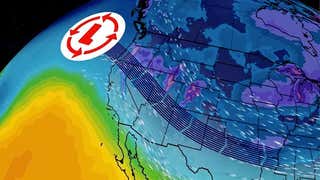

US
°C





In 1986, a nuclear explosion changed life forever in Pripyat, Ukraine. The Chernobyl disaster dumped radiation across Europe, contamination affecting life there as we know it– or so we thought.
As the decades have passed, humans still stay away from the Chernobyl Exclusion Zone (CEZ), the 834-square-mile radius around the Chernobyl Nuclear Power Station.
But animals have returned. And a new study shows that they're thriving.
Using remote cameras in the Polesie State Radioecological Reserve, researchers captured images of animals over the course of five weeks in 2014. Dozens of cameras were set up across 94 of stations that used a fatty acid scent to attract the wildlife. The results,published this week in the journal Frontiers in Ecology and the Environment, were surprising. Not only are animals stable there, but their populations may be in better shape than before the disaster.
Researchers captured images of 14 mammal species at these "scent stations." Of those species, the ones researchers had "sufficiently robust visitation rates to allow occupancy to be modeled" included: gray wolves, raccoon dogs, Eurasian boars, and red foxes. These animals, the researchers argue, were doing remarkably well for themselves. Unlike other research that suggested wildlife was diminishing due to contamination after the nuclear disaster, this recent study shows quite the contrary.
(MORE: Norway's Radioactive Reindeer Are a Result of the 30-Year-Old Chernobyl Disaster)
“I would argue that for many of those species [the effects of radiation], even if they’re there, probably aren’t enough to suppress populations to the point where they can’t sustain themselves,” one of the study's researchers, James Beasley of the University of Georgia, Savannah River Ecology Laboratory, told National Geographic. "Humans have been removed from the system and this greatly overshadows any of those potential radiation effects.”
The study comes at the heels of research published last year that analyzed animal tracks in Chernobyl to estimate what wildlife populations are like in the area.
"The earlier study shed light on the status of wildlife populations in the CEZ, but we still needed to back that up," Beasley said in a UGA press release. "For this study we deployed cameras in a systematic way across the entire Belarus section of the CEZ and captured photographic evidence—strong evidence—because these are pictures that everyone can see."
Now that the populations of these mammals have been established, further study is needed to find out just how much the radiation is affecting these animals.
MORE ON WEATHER.COM: Chernobyl 30 Years Later
A sign warns of radiation contamination near abandoned apartment buildings on April 9, 2016 in Pripyat, Ukraine. Pripyat, built in the 1970s as a model Soviet city to house the workers and families of the Chernobyl nuclear power plant, was evacuated following the April 26, 1986 disaster, and is now a ghost town. The world is commemorating the 30th anniversary of the April 26, 1986 Chernobyl disaster.(Sean Gallup/Getty Images)












